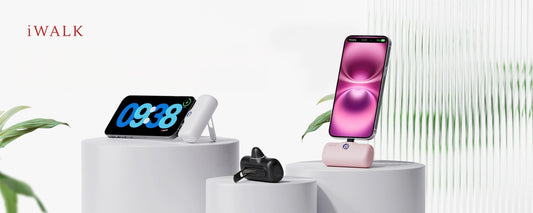Two of the most common USB cable types are USB 2.0 and USB 3.0. But how do they differ, and which one should you choose?
What is USB 2.0?
USB 2.0, also known as High-Speed USB, was first introduced in the year 2000. It became widely adopted due to its ability to transfer data at speeds up to 480 Mbps, which was a significant improvement over its predecessor. Despite its age, USB 2.0 is still widely used for many applications, especially for tasks like charging devices, connecting printers, keyboards, and mice.

USB 2.0 has certain limitations compared to its newer counterparts, but it remains a solid choice for basic tasks. Here are some important features:
Transfer Speed: Up to 480 Mbps
Power Output: Provides up to 2.5 watts (5V, 500mA)
Compatibility: Backward-compatible with older USB versions
What is USB 3.0?
USB 3.0, introduced in 2008, represents a major upgrade in both speed and efficiency compared to USB 2.0. The most significant difference is in the transfer speed, with USB 3.0 offering data transfer rates up to 5 Gbps—10 times faster than USB 2.0. This makes USB 3.0 an excellent choice for tasks that involve heavy data transfer, such as backing up large files, connecting to high-speed external storage, and transferring high-definition video.

Another significant improvement is in power management. USB 3.0 can deliver more power to devices, making it ideal for fast charging and powering devices that require more energy.
Here are some features of USB 3.0:
Transfer Speed: Up to 5 Gbps
Power Output: Up to 4.5 watts (5V, 900mA)
Backward Compatibility: Works with USB 2.0 devices, but with reduced speed.
Frequently Asked Questions About USB 2.0 vs USB 3.0
Q1: Can I use a USB 3.0 device with a USB 2.0 port?
Yes, USB 3.0 devices are backward compatible with USB 2.0 ports. However, the data transfer speed will be limited to the maximum speed of the USB 2.0 port (480 Mbps), which is slower than the full potential of USB 3.0.
Q2: Will a USB 2.0 cable work for fast charging with a USB 3.0 charger?
While USB 2.0 can still charge devices, it may not provide fast charging like USB 3.0 cables do. USB 3.0 cables support higher power outputs and are typically designed to handle fast charging, especially for devices that support technologies like Qualcomm Quick Charge or Power Delivery (PD).

Q3: How can I identify whether my device supports USB 2.0 or USB 3.0?
You can visually identify the ports on your device. USB 3.0 ports often have blue internal coloring and may feature the "SS" (SuperSpeed) symbol, whereas USB 2.0 ports typically have black internal coloring. Some devices also label the ports directly to indicate their version.
Q4: Do USB 3.0 cables work with USB 3.1 or USB 3.2 ports?
Yes, USB 3.0 cables will work with USB 3.1 and USB 3.2 ports. These newer USB standards maintain backward compatibility, though they may offer higher speeds and power outputs depending on the specific port and cable used.
Q5: Can I use USB 2.0 and USB 3.0 cables interchangeably to charge my devices?
Yes, you can use both USB 2.0 and USB 3.0 cables for charging, but USB 3.0 cables are generally preferred for faster charging, especially with devices that support fast charging technologies. USB 2.0 cables will work for basic charging, but they may charge devices more slowly than USB 3.0.
Which One Should You Choose?
When deciding between USB 2.0 and USB 3.0, it ultimately comes down to your needs. If you're looking for faster data transfer speeds and improved power delivery, USB 3.0 is the better choice.

If you're in need of a reliable portable charger that supports fast charging and USB-C connectivity, iWALK has you covered. The iWALK USB-C Portable Charger is designed with USB-C and PD (Power Delivery) fast charging technology. This charger supports USB 3.0 or higher protocols for optimal charging speeds and is perfect for those who need a compact, high-performance solution for on-the-go charging.
Conclusion
In conclusion, while USB 2.0 and USB 3.0 serve similar purposes, USB 3.0 offers faster speeds and better performance for modern-day devices, whether you’re using a USB 3.0 cable for fast charging or looking for a USB-C power bank to charge your phone.










